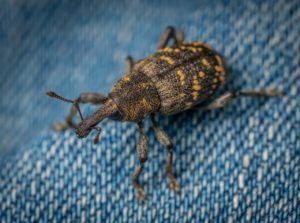 If you have mice in your home, destroying them with triple-strength mouse poison probably won’t solve the problem. After all, if there’s one dead mouse behind an interior wall the other mice probably know about it and are avoiding it or they’ve decided to move out of that part of the house for good.
If you have mice in your home, destroying them with triple-strength mouse poison probably won’t solve the problem. After all, if there’s one dead mouse behind an interior wall the other mice probably know about it and are avoiding it or they’ve decided to move out of that part of the house for good.
Mice are creatures of habit. They like running along the same paths day after day (and night after night). If one path is blocked off by some menace like a trap, poison or moat then they’ll look for another path. And if they can’t find one then they’ll likely migrate elsewhere rather than face an injured comrade on their once familiar trail who might be giving off more of those intriguing scents (the ones in the poison).
So what happens if the mice suddenly find their usual paths blocked?
They might be “moused out” and move on. Or they may decide to move into your attic instead of continuing to run along your baseboards. And that’s not good news, especially for an attic full of valuable things like insulation, wiring, drywall, wood beams and mice droppings!
Mice can chew through just about anything when it comes to getting into a place they want to be. The patching compound used when you repair holes in walls is no match for these determined rodents who will eventually choose to ignore it over chewing through it (that’s assuming they can’t reach behind it with teeth).
The easiest way to get rid of mice in walls is to stop them from entering the interior of your house in the first place! There are many ways to do this, but what works best depends on where you live and how you want to handle the problem.
Mice Prevention Methods
Repellents: That foul-tasting stuff sold at hardware stores that you’re supposed to put around the exterior of your home is typically made with castor oil, hot pepper or capsaicin (the ingredient that also makes peppers hot). Mice don’t like it one bit and will stay away if they can. The drawback here is that some animals (such as deer) won’t turn their noses up at these concoctions; therefore using them on all sides of your home is not always practical.
Traps: Like repellents, live snap traps are effective in keeping mice out of your house. The problem with traps is that if there’s more than one entrance hole to your home or if the mouse manages to get inside and find the trap before you do then you’ll have a harder time freeing it without hurting yourself (or having it hurt itself in an attempt to free itself which will only make matters worse).
 Mice Moat: If you think trapping sounds like too much work you might consider placing water-filled plastic containers (such as milk jugs) around the exterior of your home with the tip pointing up toward the sky. Mice won’t choose to run through these because they can’t swim. If they try to go over them then they’ll fall inside and drown.
Mice Moat: If you think trapping sounds like too much work you might consider placing water-filled plastic containers (such as milk jugs) around the exterior of your home with the tip pointing up toward the sky. Mice won’t choose to run through these because they can’t swim. If they try to go over them then they’ll fall inside and drown.
Using these methods alone may keep some mice out of your house but probably not all of them, especially if there’s more than one entrance to your home or if they can find a way in from an attic or crawlspace. If you want complete mouse protection then you’ll need to seal off all entrances except one which you can easily close off when needed.
